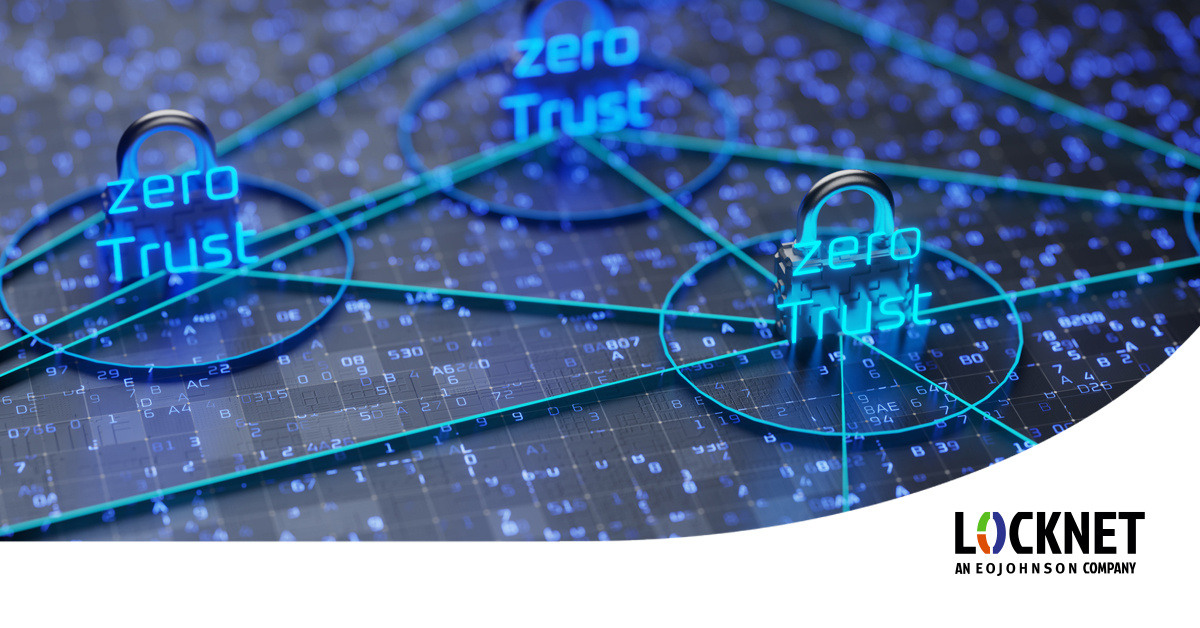Industries We Serve
World Class IT Support & Service
Real People. Right Now.
About Locknet® IT Services
From the first hello, the Locknet® team is dedicated to serving you and your needs.
Real People. Right Now.
From the first hello, the Locknet® team is dedicated to serving you and your needs.


Updated November 4, 2024
In a world where cyber threats are growing more sophisticated every day, traditional network security models are no longer enough to protect sensitive information. The evolution of technology, remote work, and cloud services has expanded the attack surface for malicious actors. This is where Zero Trust security comes into play. It’s a strategic framework designed to address modern cybersecurity challenges by ensuring that no one inside or outside of the network can be trusted by default.
Zero Trust is a security model that operates under the principle of "never trust, always verify." Unlike traditional perimeter-based security, which assumes that threats come primarily from outside the network, Zero Trust acknowledges that threats can come from anywhere - inside or outside of the network. Whether it's an internal employee, a third-party vendor, or an external hacker, everyone must be authenticated, authorized, and continuously validated.
The key elements of Zero Trust include:
With the rise of sophisticated cyberattacks like ransomware, data breaches, and insider threats, traditional security models are often inadequate. Here’s why Zero Trust has become a critical approach for organizations today:
Transitioning to a Zero Trust model requires careful planning and execution. Below are some best practices to guide you in securing your network with Zero Trust principles:
At the core of Zero Trust is ensuring that only the right people and devices have access to your network. Implementing robust access management systems can help verify the identity of users before they access resources. Multi-factor authentication (MFA) is critical here. This adds an extra layer of security by requiring multiple forms of verification (e.g., password, mobile token) before access is granted.
Grant users only the minimum access necessary to perform their job functions. This limits the damage that can be done if a user account is compromised. Implement role-based access controls and attribute-based access controls to ensure that employees, contractors, and vendors have access only to the data and systems they need.
Network segmentation divides your network into smaller, isolated sections. This limits the ability of attackers to move laterally within the network if they gain access. If one segment is compromised, it doesn't provide free rein across the entire network.
One of the pillars of Zero Trust is continuous monitoring of network activity. Deploy tools that analyze behavior in real time, looking for anomalies such as unusual login locations, excessive data downloads, or atypical network traffic. Threat detection and response tools using artificial intelligence and machine learning can help flag suspicious activity faster and more accurately.
Encryption is a key component of Zero Trust. Data should be encrypted both at rest and in transit to ensure that, even if it is intercepted, it cannot be read or used by unauthorized parties. Use modern encryption standards and ensure that sensitive data, such as personally identifiable information (PII) or financial records, is always protected.
Zero Trust is not just a technology change - it’s a shift in mindset. Educate employees and stakeholders about the importance of cybersecurity and their role in maintaining the security of the network. Regular training on security best practices and phishing awareness can reduce the likelihood of breaches.
Additionally, fostering a security-first culture across all departments ensures that security is integrated into every aspect of operations, from onboarding new employees to developing new software applications.
Implementing Zero Trust security is a necessary step for organizations looking to protect their networks from the evolving threat landscape. Though the journey to Zero Trust may require significant changes to existing security practices, the long-term benefits, which include better protection against cyberattacks and improved compliance, are well worth the investment.
There's no time like the present to review your cybersecurity efforts. Our team at Locknet Managed IT are experts at how to implement Zero Trust security, ensuring your organization has the best defense from both inside and outside your network.
Cybersecurity

Onalaska, WI Waterloo, IA Wausau, WI Eau Claire, WI Burnsville, MN
You are now leaving locknetmanagedit.com. Please check the privacy policy of the site you are visiting.